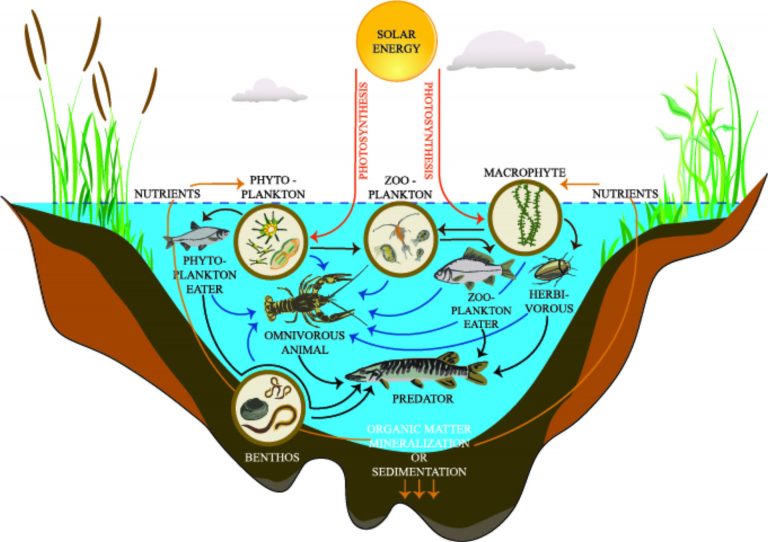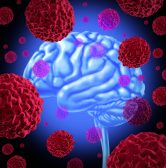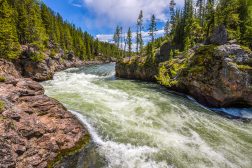Freshwater Producers and Consumers

Freshwater lake ecosystem
There are four main constituents of the living environment that form the freshwater ecosystem, they are as follows.
- Elements and Compounds of the ecosystem that are absorbed by organisms that are required as a food source or for respiration. Many of these compounds are required by plants and passed along the food chain.
- Plants that are autotrophic by nature, meaning that they synthesize food by harnessing energy from inorganic compounds (plants do so by photosynthesis and the sun); this is done via photosynthesis. These plants (and some bacteria) are the primary producers, as they produce (and introduce) new energy into the ecosystem.
- Consumers, which are the organisms that feed on other organisms as a source of food. These may be primary consumers who feed on the plant material or secondary consumers who feed on the primary consumers.
- Decomposers attain their energy by breaking down dead organic material (detritus), and during this reaction, release critical elements and compounds which in turn are required by plants.
This simple classification of life in the ecosystem indicates a simplified relationship where each pass on energy in the food chain allowing one another to survive.
An ecological pyramid indicates energy passing along from autotrophic organisms to carnivores at the top of the chain. Those at the bottom of the food chain are usually the smallest in size but not always, and are almost inevitably the largest in number. Those who feed off these primary producers are less in number, usually, because they are larger and require more than one portion of prey per meal as a means of fulfilling nutritional requirements for a larger organism. This situation continues to the top of the chain, where few secondary consumers are eaten by an even smaller amount of tertiary consumers.
This is typical of a food chain in a freshwater community. Sometimes the pyramid diagram of a food chain can be inversed, usually in the case of parasites and hyper-parasites, where many smaller organisms rely on much larger organisms as a means of food and survival.
The next tutorial continues looking at the relationship between organisms and how energy is passed on in the food chains and looks at ecological pyramids.
You will also like...

Protein Synthesis
Part of the genetic information is devoted to the synthesis of proteins. mRNA, a type of RNA, is produced as a transcri..

Physical Development in Humans
This tutorial elaborates on the physical development of humans, particularly from puberty to adulthood. Read this tutori..

Types and Causes of Brain Damage
This tutorial describes the different types and causes of brain damage. Find out how genetics, physical injury, lack of ..

Running Water Freshwater Communities
This tutorial introduces flowing water communities, which bring new and dithering factors into the equation for possible..

Human Reproduction
Humans are capable of only one mode of reproduction, i.e. sexual reproduction. Haploid sex cells (gametes) are produced ..

Adaptation Tutorial
Adaptation, in biology and ecology, refers to the process or trait through which organisms or the populations in a habit..
